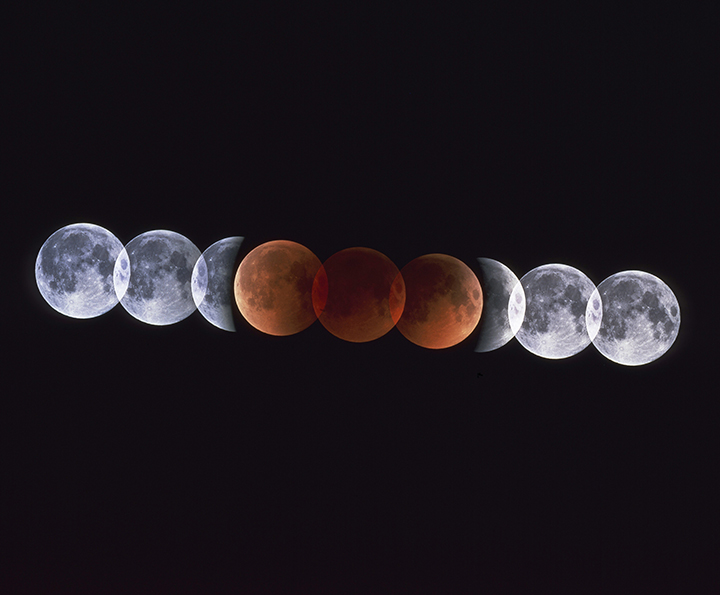Lunar Eclipse
1.25 light seconds

Image Credit: Akira Fujii/Ciel et Espace
When the Moon passes through the shadow of the Earth, a lunar eclipse occurs. During such an event, light from the Sun still reaches the Moon. However, before sunlight reaches the Moon, it must pass through dense layers of the Earth's atmosphere. When this happens, the light is scattered by molecules of air and other small particles in the atmosphere. The shorter, or bluer, wavelengths of light are more affected by this, so mainly only the red part of sunlight reaches the Moon. This is why the Moon appears to be orange or red during a lunar eclipse. This multiple-exposure image was taken during a lunar eclipse on July 16, 2000.
Listen to audio version (English)
Download high-res image file | Download caption as .zip file
Eclipse Lunar - 1.25 segundos luz de la Tierra
Cuando la Luna pasa a través de la sombra de la Tierra, ocurre un eclipse lunar. Durante dicho evento, la luz del Sol aún alcanza la Luna. Sin embargo, antes de que la luz del Sol llegue a la Luna, debe pasar a través de las capas densas de la atmósfera de la Tierra. Cuando esto sucede, la luz es dispersada por las moléculas de aire y otras partículas pequeñas en la atmósfera. Cuanto más corto o más azul, las longitudes de onda de la luz se dispersan más, así que principalmente sólo la parte roja de la luz solar llega a la Luna. Esta es la razón por la cual la Luna parece ser de color naranja o roja durante un eclipse lunar. Esta imagen de exposiciones múltiples fue tomada durante un eclipse lunar el 16 de julio del 2000.
Download high-res image file | Download caption as .zip file



